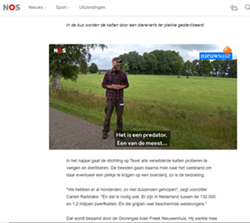Smit, prof. dr. ir. Chris

Chris Smit is associate professor in Ecologie en Natuurbeheer aan de Faculty of Science and Engineering bij de Rijksuniversiteit Groningen. Hij studeerde Forest and Nature Conservation aan de Wageningen University. Smit is gespecialiseerd in Ecologie en Natuurbeheer en onderzoekt interacties tussen soorten en de gevolgen daarvan voor de dynamiek, biodiversiteit en ruimtelijke organisatie van natuurlijke gemeenschappen.
Smit gebruikt meestal grootschalige veldstudies in ecosystemen waar (grote) herbivoren een belangrijke rol spelen (bv. gematigde savannes, bosweiden, semi-aride steppen, gematigde laaglandbossen, kwelders, wetlands). Zijn interesse ligt op facilitatie, d.w.z. positieve interacties tussen soorten, en hoe deze interacties worden gevormd door het samenspel van verschillende (a)biotische factoren. Verder werkt Smit aan de ecologie van angst, d.w.z. hoe grote roofdieren (en de mens) het gedrag van herbivoren beïnvloeden, met mogelijke cascade-effecten op het ecosysteem.
Eerder in het nieuws

